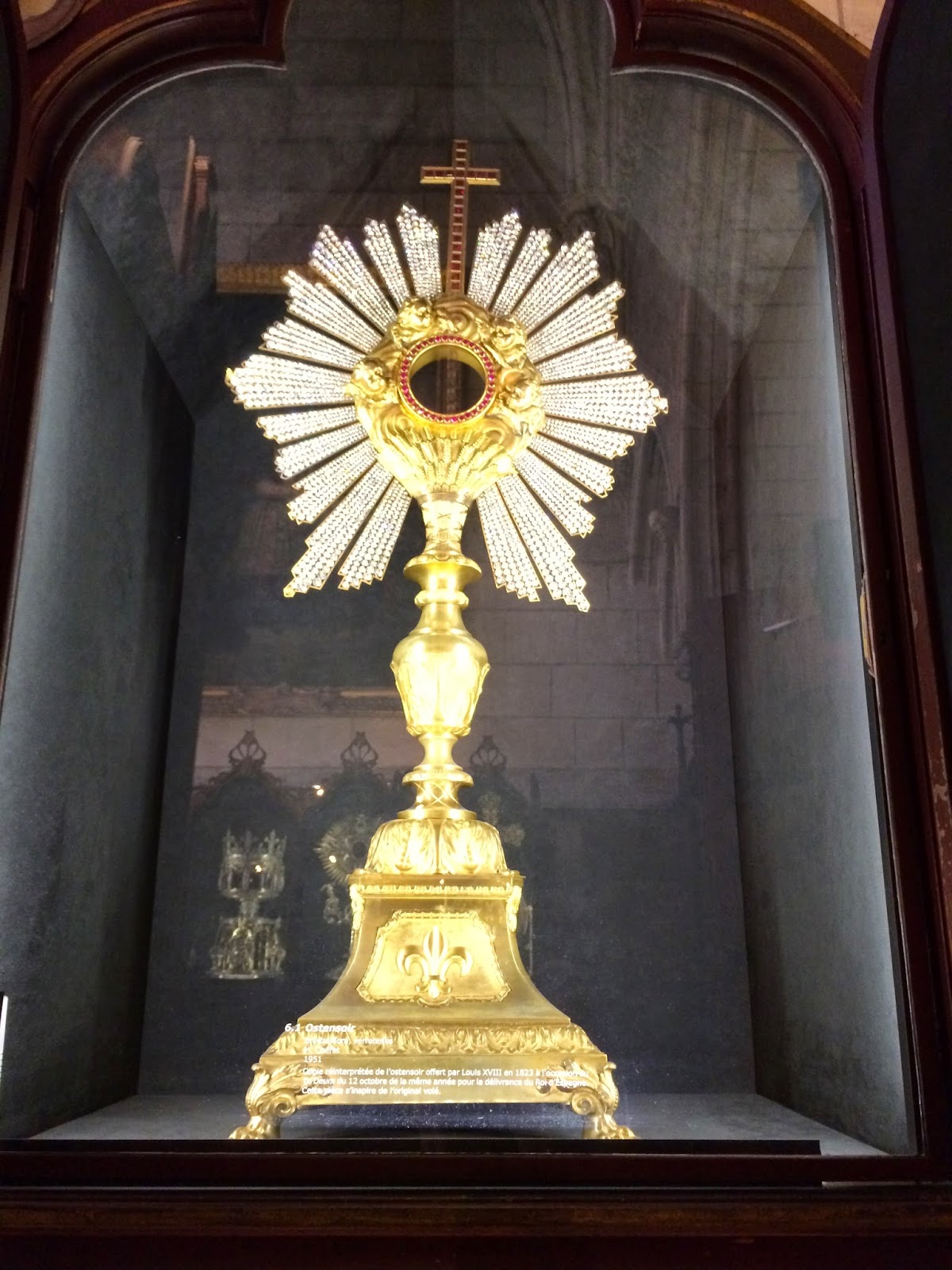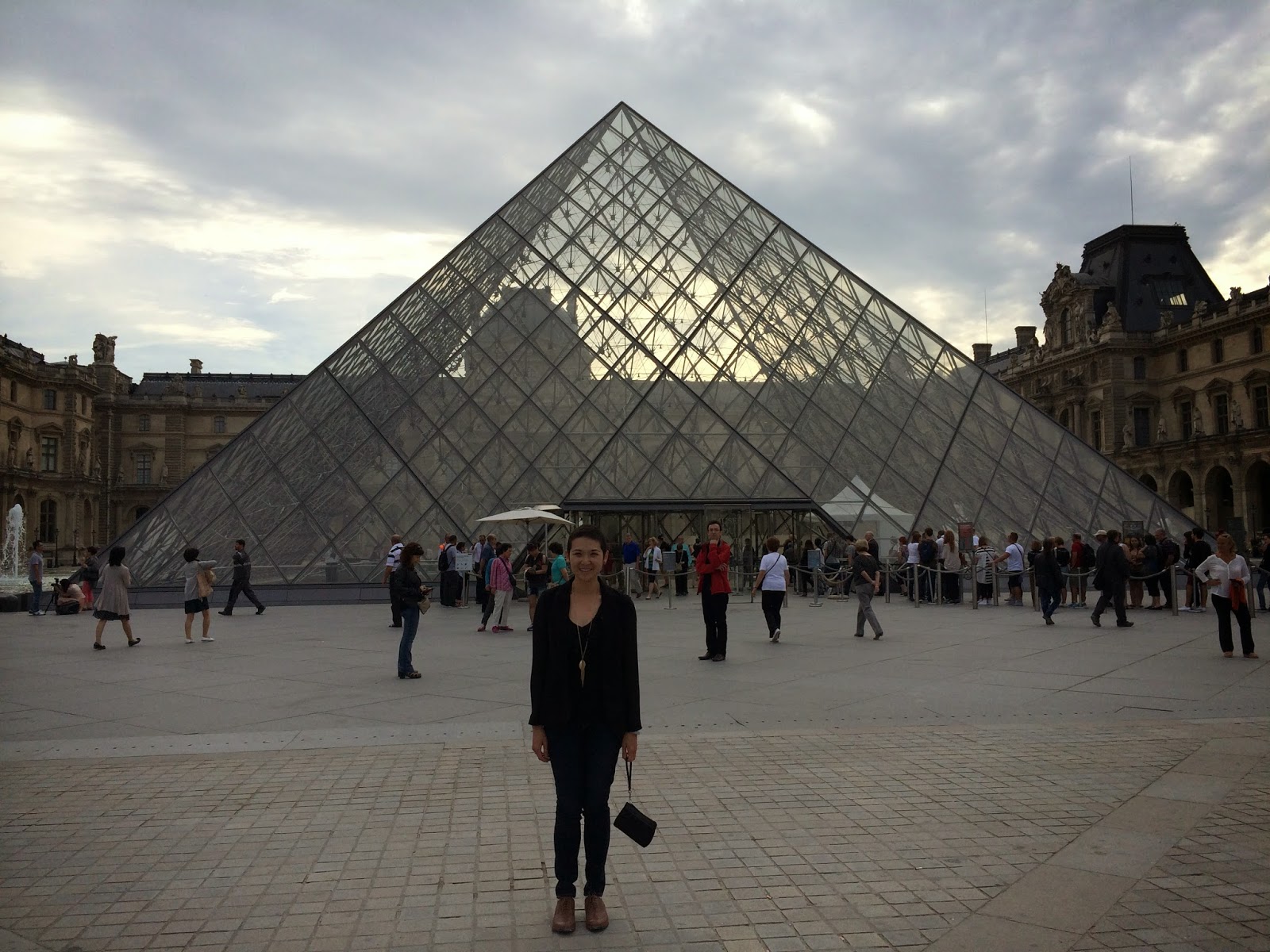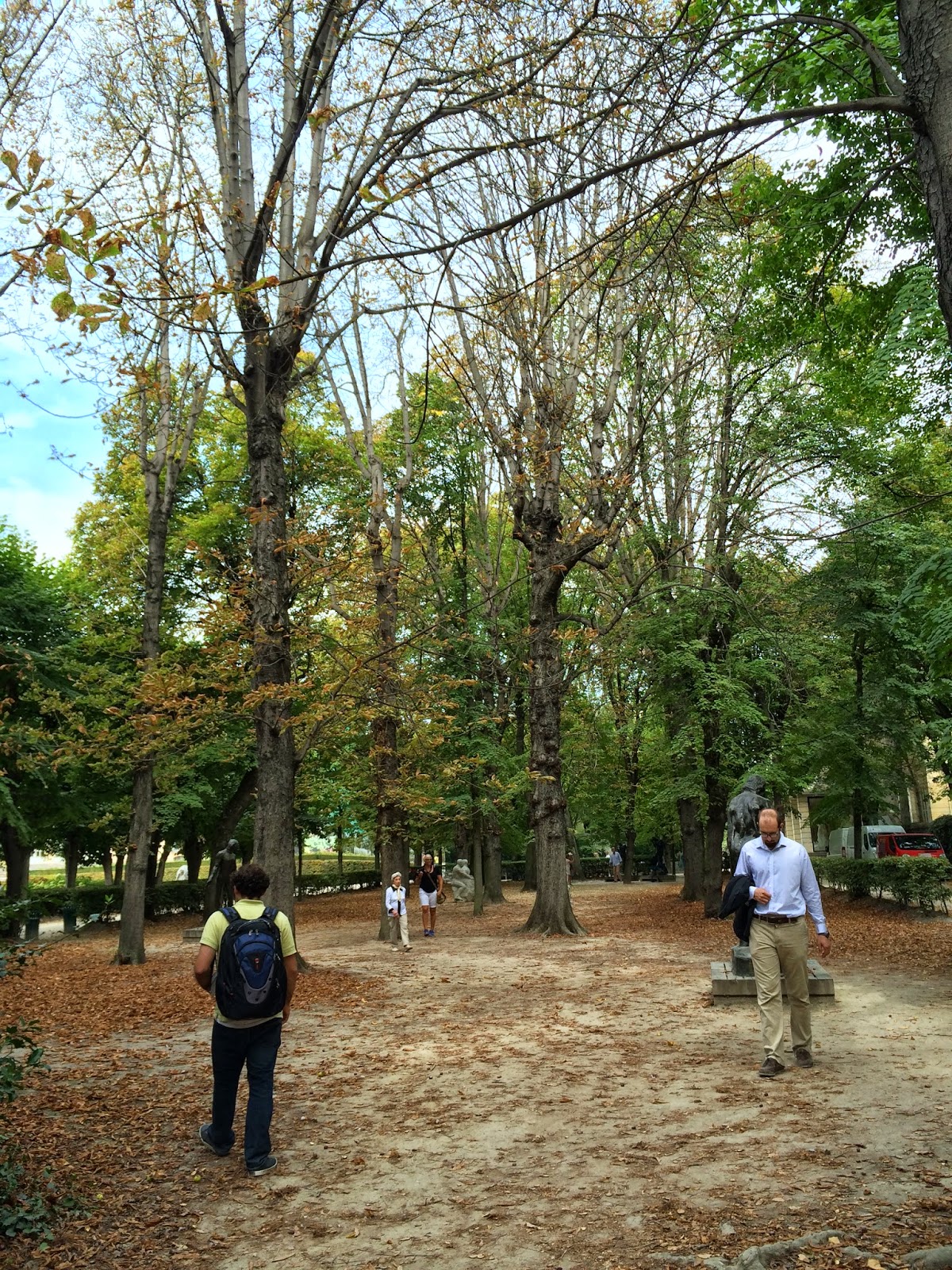Since high school, France has been a place where I’ve wanted to visit for the following reasons:
As a family, we’ve tried several times to visit France, but every time we tried to go, our grandmothers became ill, so we always went to visit them in Vietnam instead. Our rationale was that France would always be there, our grandmothers would not. Looking back on it, I’m glad that we did make the decision to visit them as often as we did because we were able to maintain a close and loving relationship even though we were halfway around the world from each other.
After our grandmothers passed away, I lost interest in going to France. I started working, and then went on to graduate school. School became everyone’s priority, and it was difficult coordinating everyone’s schedules for a family vacation, so it was easier not going.
The turning point was being diagnosed with cancer. It was only when I had my health taken away from me, did I developed a deep appreciation and thirst for life. I made a promise to myself to take advantage of every moment that I was healthy, and to truly live.
Last year, I decided that as soon as I had a window of good health, I would finally make the long overdue trip to France. Unfortunately, not long after discussing my plans with Andrew, I received the news that the cancer had come back. When I was finally done with treatment and was well enough to travel, seven months had passed by, and it was already the end of July.
I had wanted to visit France for over ten years now, and I thought that this was Fate’s cruel way of telling me that it just wasn’t meant to be. Andrew didn’t believe that. He reminded me that we are in control of our own destiny. If there’s something we want in life, we have to have the courage to fight for it. We can’t go through life being afraid, and making excuses for ourselves. With my renewed faith, Andrew and I managed to plan our entire trip to France in just a few weeks.
Enjoy our France Adventure Part 1. It chronicles our first four days in Paris. Au revior!
- In 1887, Vietnam formed part of French Indochina, and was ruled by France as a colony until the First Indochina War. Even though Vietnam obtained its independence in 1954, many Vietnamese continue to have a romanticized relationship with its former mother country.
- France has an elaborate history that has changed and evolved over the centuries. Most notable include The French Revolution, and the rise and fall of Napoleon.
- Many of my favorite literary works, and cinematic films are set in France.
- Paris has a rich art heritage. I especially love impressionism, pointillism, cubism, and surrealism, even though I don't understand many of these works.
- Growing up, my mom, sister, and I enjoyed watching famous French fashion houses model their spectacular collections. What better way to pay tribute than by visiting the fashion capital of the world, Paris.
As a family, we’ve tried several times to visit France, but every time we tried to go, our grandmothers became ill, so we always went to visit them in Vietnam instead. Our rationale was that France would always be there, our grandmothers would not. Looking back on it, I’m glad that we did make the decision to visit them as often as we did because we were able to maintain a close and loving relationship even though we were halfway around the world from each other.
Our Paternal Grandmother (Bà Nội). Vietnam 2006.
Our Maternal Grandmother (Bà Ngoại). Vietnam 2008.
After our grandmothers passed away, I lost interest in going to France. I started working, and then went on to graduate school. School became everyone’s priority, and it was difficult coordinating everyone’s schedules for a family vacation, so it was easier not going.
The turning point was being diagnosed with cancer. It was only when I had my health taken away from me, did I developed a deep appreciation and thirst for life. I made a promise to myself to take advantage of every moment that I was healthy, and to truly live.
Last year, I decided that as soon as I had a window of good health, I would finally make the long overdue trip to France. Unfortunately, not long after discussing my plans with Andrew, I received the news that the cancer had come back. When I was finally done with treatment and was well enough to travel, seven months had passed by, and it was already the end of July.
I had wanted to visit France for over ten years now, and I thought that this was Fate’s cruel way of telling me that it just wasn’t meant to be. Andrew didn’t believe that. He reminded me that we are in control of our own destiny. If there’s something we want in life, we have to have the courage to fight for it. We can’t go through life being afraid, and making excuses for ourselves. With my renewed faith, Andrew and I managed to plan our entire trip to France in just a few weeks.
Enjoy our France Adventure Part 1. It chronicles our first four days in Paris. Au revior!
Cathédrale Notre Dame de Paris
Notre Dame is the most visited unticketed site in Paris with
upwards of 14 million people each year. Construction began in 1163,
during the reign of Louis VII, and took almost 200 years to complete.
Interior
The interior is 130 m long, 48 m wide and 35 m high and
can accommodate more than 6,000 worshippers. The most
spectacular interior features are the three rose windows.
These ornate wooden panels were carved in the 14th century
after the Black Death killed half the country's population.
Enjoying the masterpiece of French Gothic architecture.
The trésor contains artwork, liturgical objects, and first-class relics.
As Austin Power's Goldmember would say, "I love gold!"
Exterior
Notre Dame is the last large galleried church and
one of the first to be supported by flying buttresses.
We had to climb the 422 spiralling
steps to reach the top of the the north tower.
The Galerie des Chiméres (Gargoyles Galley) was designed by Eugène
Viollet-le-Duc in the 19th century. These fantastic birds, hybrid beasts,
and mythical monsters perching on the towers also function as rain spouts.
Everyone looked tiny in the West Courtyard.
The Neo-Gothic 300 ft. spire was reconstructed in 1860 to replace the
smaller one destroyed during the Revolution. Four group of three apostles,
and allegorical descriptions of evangelists, descend on all sides of the spire.
Vy and Andrew, The Hunchbacks of Notre-Dame.
Pont de l'Archevêché (Love Locks)
Locks are attached by couples as a symbol of eternal love. On June 2014,
part of the Pont de Art footbridge collapsed under the weight of these
padlocks. We decided to proclaimed our love digitally #lovewithoutlinks.
Left Bank Booksellers
The waiting list to become one of Paris' 250 bouquinistes is eight years!
Square René-Viviani
The oldest tree in Paris is a locust tree (robinia pseudoacacia). It's believed
to have been planted by Jean Robin in 1601, making it over 400 years old.
Shakespeare and Company Bookstore
During the 1920s, Shakespeare and Company was a meeting place for Paris'
expatriate literary elites such as Ezra Pound, Ernest Hemingway, James Joyce
and Ford Madox Ford. The original shop is located on on Rue de l'Odéon.
Saint Séverin
Saint Séverin took a century longer to build than Notre Dame. It's a
prime example of "Flamboyant Gothic" with its short, prickly spires.
#22 Rue St. Séverin is the "skinniest house in Paris."
Place Saint-Michel
In the 19th century, Place St. Michel was a gathering
point where citizens fought against royalist oppressions.
Equestrian Statue of King Henry IV
The Square du Vert-Galant is one of Paris' make-out spots. It's named after
Henry's nickname, the Green Knight, since he was a notorious ladies' man.
Musée du Louvre
Phillippe-Auguste built the Louvre as a fortress from 1190 to 1202.
In the 16th century, it became a royal residence, and after the
Revolution of 1793, it was turned into a national museum.
The Louvre is the largest museum in the Western world showcasing
more than 35,000 works of art from the ancient world to 1850.
Sully Wing
Greece (500 BC-AD 1)
Venus de Milo (Aphrodite, late 2nd century BC) is a harmonious balance of opposites.
It's actually made from two different pieces of stone joined together at the hips.
La Pallas of Velletri (Athena, c. 430 BC) is the most popular goddess of the Athenians.
She's usually shown as a warrior, wearing a helmet and carrying a spear.
The Tenth metope from the south façade of the Parthenon (c. 447-432 BC)
is a fragment from the exterior of the Athenian temple, the Parthenon.
This stone illustrates a battle between the centaurs and the Lapiths.
In love with L'empereur Marc Auréle's
(Marcus Aurelius, c. AD 161-169) beard, and dreamy curls.
The Winged Victory of Samothrace (Victoire de Samothrace, c. 190 BC)
commemorates a naval victory at Rhodes.
Cy Twombly was the third contemporary artist that had the honor of designing
a permanent work for the Louvre. The 4,300 sq. ft. Ceiling (2010) is deep blue
emblazoned with geometric circles and names of sculptors from Ancient Greece.
Denon Wing
The Medieval World (1200-1500)
The frame of The Madonna and Child in Majesty Surrounded by Angels
(La Vierge et l'Enfant en Majesté Entourés de Six Anges, c. 1280) is decorated
with twenty-six painted medallions depicting Christ and four angels.
Italian Renaissance (1400-1600)
The Grand Gallery was built in the late 1500s to
connect the old palace with the Tuileries Palace.
Leonardo da Vinci used the sfumato technique, blurring the edges of
Mona Lisa (La Joconde, c. 1503-1506)'s mouth to create her mysterious smile.
The painting is small, and is located in a
large room, hidden behind a glaring pane of glass.
The Marriage at Cana (Les Noces de Cana, c. 1562-1563) shows
the wedding celebration in which Jesus turned water into wine.
French Neoclassicism (1780-1850)
The grand Neoclassical room contains the largest canvas
in the Louvre, The Coronation of Emperor Napoleon.
The Coronation of Emperor Napoleon (Sacre de l'empereur Napoléon, c. 1806-1807).
The Grande Odalisque (c. 1814) is notable for the
exaggerated S-curve of a standing Greek nude.
French Romanticism (1800-1850)
Liberty Leading the People (La Liberté Guidant le Peuple, c. 1831)
embodies the French's passion for liberty.
Italian Renaissance
Hercules Fighting the Hydra (Hercule combattant l'Hydre, 16th century).
Richelieu Wing
Near Eastern Antiquities
The Stela of the Vultures (Stèle des Vautours, c. 2600-2330 BC)
is believed to be the world's oldest surviving historical document.
Ebih-Il, The Superintendent of Mari (c. 2400 BC) was discovered in
the first temple excavated at Mari to Ishtar Virile, the goddess of war.
Headless Statue of Gudea, Prince of Lagash (c. 2350-2000 BC) is
consecrated to Ningirsu, the great god of the pantheon of the state of Lagash.
The Code of Hammurabi (c. 1792-1750 BC) has 282 laws
engraved in the Akkad language. This basalt stela is one of the
first formal legal documents before the Ten Commandments.
These 30 ton, 14 ft. Winged Human-Headed Bulls (Taureau Androcéphale Ailé,
c. 721-704 BC) guarded the entrance to Sargon II's throne room.
What better way to take a break from walking by taking a selfie?
Egyptian Antiquities (c. 4000 BC-4th century AD)
The Department of Egyptian Antiquities collection contains over 9,000 works.
This Great Sphinx of Tanis (c. 2600) was a symbolic representation of the close
relationship between the sun god (the lion's body) and the king (the human head).
The Sarcophagi Room.
Napoleon III Apartments
Napoléon III Apartments is a stunning world of gold, crimson velvet, and crystal.
The great Second Empire décor survived complete with their original furnishings.
The Pyramid was designed by architect leoh Ming Pei, and is built
of sheet glass supported on a framework of stainless-steel tubes.
Getting kicked out of the museum was definitely Koller Family Style!
Musée d'Orsay
The Musée d'Orsay houses French art of the 1800s and early
1900s, picking up where the Louvre's collection leaves off.
Jean Auguste Dominique Ingres worked on The Source
(La Source, 1856) for over 35 years. It's considered his "image of perfection."
Trains used to run down the center of the gallery.
It felt great getting to rest my feet.
Time for the next museum.
Musée Rodin
The Kiss (Le Baiser, 1888-1889) was the first Rodin
work the public loved. It caused controversy due to his
radical approach of depicting women as equal partners.
The Gardens
The Thinker (Le Penseur, 1906) symbolizes intellect and
poetry. It was the first large-scale cast of his famous sculpture.
Rodin loved placing his creations in the overgrown gardens.
Why, hello there!
The Gates of Hell (La Porte de l'Enfer, 1880-1917)
was commissioned for a never-built museum. Its 180
figures comprise an intricate scene from Dante's Inferno.
The Burghers of Calais (Bourgeois de Calais, 1889)
shows six city fathers on their way to execution.
The elusive Big Foot.
Musée de l'Armée
Musée de l'Armée was founded in 1905 with the merger of
the Musée d'Artillerie and the Musée Historique de l'Armée.
It contains one of the world's richest collections of military
objects and history. There are more than 500,000 arms, amours,
artillery pieces, decorations, emblems, paintings, and photographs.
Louis XIV to Napoleon I (1614-1814)
Louis XIV unified the army by creating the first modern nation-state with a
military force. Gunpowder turned swords into pistols, muskets, and bayonets.
Napoleon's Arabian horse, Le Vizir, accompanied
him on many campaigns. The stuffed horse was a bit scary.
From 1668 onward, minister of war to Louis XIV, Marquis de Louvois constructed
100 relief maps. These strategic tools were accurate representations of towns,
making it possible to plan changes to military fortifications or to simulate sieges.
World War 1 (1914-1918)
The debut of early modern technology.
Propeller of "Wright" biplane (1910). 2.60 m, 3,700 kg.
Besides the Western Front, WWI extended to the colonies
where many natives joined the armies of their mother countries.
World War II (1939-1945)
Contents of a soldier's ration pack.
Napoleon's Tomb
Napoleon is buried underneath the royal church, Dome des Invalides.
The red porphyry tomb of Napoleon Bonaparte (1769-1821) is a series of
coffins within coffins (oak, ebony, two lead, mahogony, and tinplate). It
stands 15 ft. high in the center of a marble floor, circled by crowns of laurels.
Napoleon II Tomb.
Napoleon III Tomb.
The weeping willows surrounds a stone slab that once rested on
Napoleon's initial grave in St. Helena. The French and British wrangled
over what to call the hero/tyrant, and so the epitaph reads, "Here lies..."
Place de la Concorde
The 3,300 year old, 72 ft., 220-ton, red granite,
hieroglyph inscribed Obelisk of Luxor memorializes the
spot where Louis XVI was beheaded during the Revolution.
The Fontaines de la Concorde (1840) were designed by Jacques
Ignace Hittorff, and commemorates the commerce and industry of France.
Crypte archéologique du Parvis Notre-Dame
Excavations from 1965 to 1972 revealed archaeological remains.
The archaeological layers show the development of the
Île de la Cité, the historical heart of Paris since Ancient Times.
Sainte-Chapelle
This Gothic church was built between 1242 to 1248 for King Louis IX
to house the Crown of Thorns. It was completed in only six years.
There are 15 separate panels of stained glass, with more than 1,100
different scenes, mostly from the Bible. These cover the entire Christian
history of the world, from the Creation in Genesis to the end of the world.
Basking in glow of the colored light.
Palais de Justice
In 1776, the Palais de Justice was built. It was the headquarters of the
Revolutionary Government, and is now home to the French Supreme Court.

























































































No comments:
Post a Comment